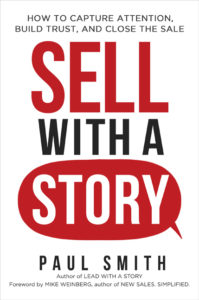Podcast: Play in new window | Download | Embed
Subscribe: RSS
Podcast (lead-with-a-story-podcast-series): Play in new window | Download | Embed
Subscribe: RSS

TIDE HAS BEEN the number one selling brand of laundry detergent in the United States since soon after its introduction in 1946. The main reason for that is that the chemists and engineers at Procter & Gamble are committed to improving the cleaning formula year after year.
In the late 1990s, one of the improvements they were working on proved to be more interesting than most. According to former Chief Technology Officer Gil Cloyd, the challenge that year was a certain type of soil that was unusually difficult to get out of a common fabric. The other unusual thing about this soil was that it would often come off of one garment in the washing machine and redeposit on another garment, instead of staying suspended in the wash water.
The typical challenge in strengthening laundry detergent is this: If the formula is too weak, it won’t clean the dirt, but leaves the fabric safe. If the formula is too strong, it cleans well, but could harm the fabric. The trick is finding just the right balance to get out the most common soils and stains without damaging the clothes. So that’s exactly the journey the development team was on.
After months of unsuccessful effort, someone asked the question,
What if that soil never got to bond on the second garment to begin with? What if we could prevent the bonding reaction in the washing machine?”
Instead of trying in vain to find chemicals that could remove the dirt, the team switched its efforts to finding chemicals that prevented it from redepositing on the fabric in the first place. In a relatively short time, the team had accomplished exactly that. Soon thereafter, they launched the most effective Tide detergent ever produced, continuing to earn the loyalty of consumers across the country.
The lesson is this: Sometimes the best way to solve a problem is to avoid getting in it in the first place.
Gil’s tale is a classic think-outside-the-box story. It’s useful for leading people to find creative solutions because you can’t just tell people to think outside the box. Instead, you have to draw them a bigger box. That’s what outside-the-box stories do. They show people a solution space they might not have considered before.
The Tide story, for example, can draw attention to all kinds of solutions that involve avoiding getting into a problem in the first place, when most people will naturally be searching for solutions to the problem they’re already in. And it doesn’t have to be a problem about laundry detergent, or chemistry even. It can serve that purpose for any problem.
So, the next time your team has a difficult challenge:
- First, share this story.
- Then ask,”What if. . .”
Use these links to subscribe to this podcast on iTunes or Stitcher, or Podbean.
Source: Lead with a Story: How to Craft Business Narratives that Captivate, Convince, and Inspire, by Paul Smith.
—
 Paul Smith is one of the world’s leading experts on business storytelling. He’s a keynote speaker, storytelling coach, and bestselling author of the books Lead with a Story, Parenting with a Story, and Sell with a Story.
Paul Smith is one of the world’s leading experts on business storytelling. He’s a keynote speaker, storytelling coach, and bestselling author of the books Lead with a Story, Parenting with a Story, and Sell with a Story.


 Connect with him via email here.
Connect with him via email here.
Follow him on Facebook, LinkedIn, Twitter, and Instagram.
Sign up for his newsletter here to get one new story a week delivered to your inbox.

